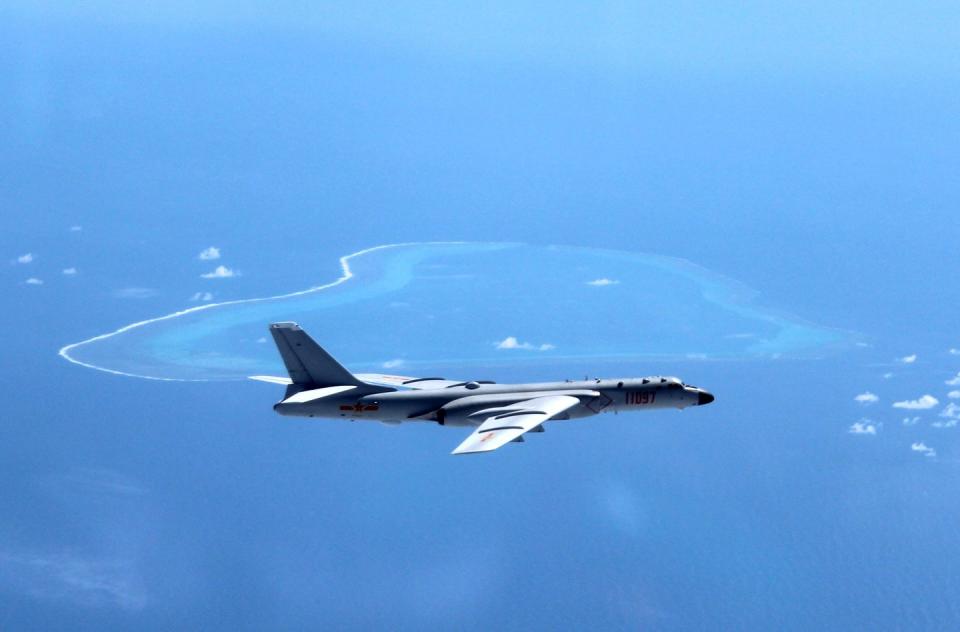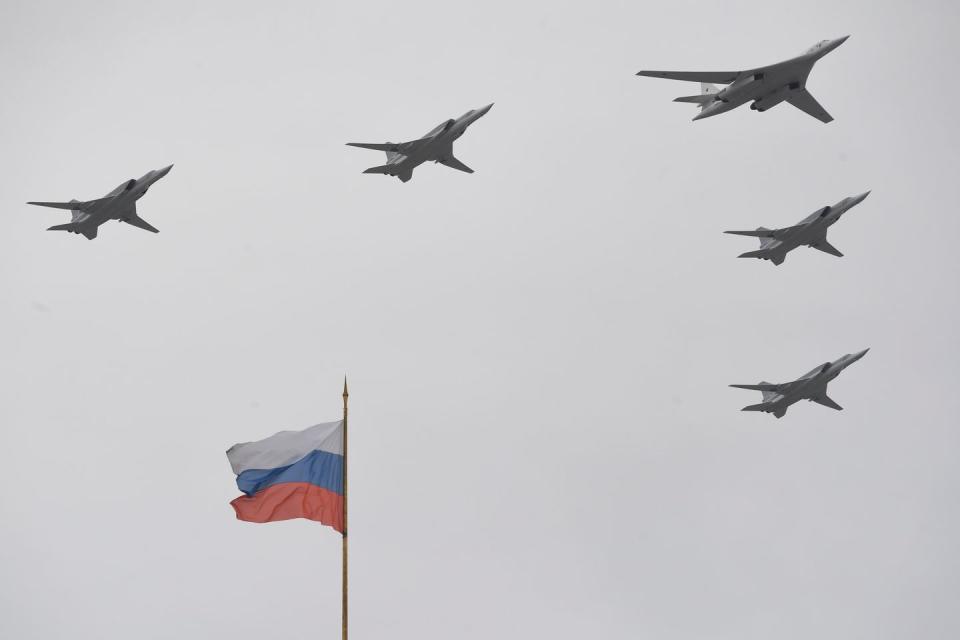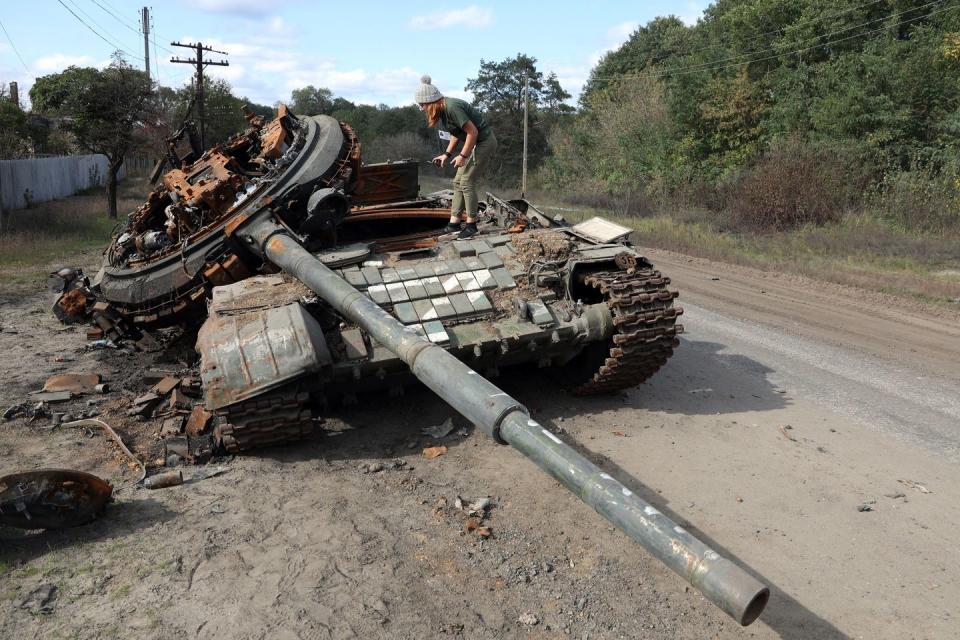Inside the Great 21st-Century Bomber Race Between Russia, China, and the U.S.

The world’s three most powerful countries are all working on strategic bombers.
All three are dual-capable aircraft that can launch conventional or nuclear weapons.
Russia’s myriad military and economic problems, however, mean its new bomber might never fly.
U.S. defense contractor Northrop Grumman has thrown down the gauntlet, promising to unveil its new B-21 Raider bomber next month. It’s expected to be the first of three new bombers in more than three decades, globally, with Chinese and Russian planes expected to fly within the next few years, as well. China’s secrecy, however, means we might see its new plane sooner rather than later, as Beijing would like nothing more than to steal the hype from America.
Bomber No. 1: The U.S.’s B-21 Raider
The B-21 Raider, which has been in development for the better part of the decade, will go public on December 2, Northrop Grumman revealed in a tweet in late October. Designed to replace the B-1B Lancer and B-2A Spirit, the bomber will emerge from the “black” world of classified aircraft development, rolling out from a hangar at the Air Force’s Plant 42, where six test aircraft are in various stages of assembly. At least one model has undergone ground tests—basic mechanical tests meant as a precursor to first takeoff and flight.
✈️ Don’t miss any of our best-in-class military and defense news. Join our squad with Pop Mech Pro.
Naming a rollout date for the American bomber will no doubt put pressure on the other two bomber powers, China and Russia, to step up their game and unveil their own planes.
On Dec. 2, we’ll unveil the world’s first sixth-generation aircraft. Stay tuned for your first look at the B-21 Raider. https://t.co/y5TJ8wOkY8 pic.twitter.com/SEWbsmVZR3
— Northrop Grumman (@northropgrumman) October 20, 2022
Development for the B-21 Raider originally began in 2004, when the U.S. Air Force began its Next Generation Bomber program. Although it was canceled in 2009 after spending $1.4 billion, the service spearheaded a new program, Long Range Strike-Bomber (LRS-B), in 2011. Four years later, the Air Force awarded the B-21 contract to Northrop Grumman, beating out a joint Lockheed Martin/Boeing effort.
Bomber No. 2: China’s Xian H-20

China has never built a domestic bomber from the ground up. China’s only active bomber, the Xian H-6, is a development of the Soviet Union’s Tupolev Tu-16, known to NATO as the “Badger.” The Tu-16 first flew in 1952. For most of its modern history, China has been unable to afford modern bombers, plowing the money it had into a large fleet of ballistic missiles with conventional high-explosive (and sometimes nuclear) warheads.
The People’s Republic is known to be working on a new stealth bomber, with a People’s Liberation Army general confirming development in 2016. The Aviation Industry Corporation of China (AVIC) is designing the bomber, known informally as the Xian H-20. AVIC publicly teased the H-20 in 2018 (pictured below), but the military told Congress in a 2020 report that it may not enter service for another decade, Aviation Week & Space Technology reports. The publication estimates China will build at least 34 H-20 bombers.
Not much is known about the H-20 outside of what we see from the teaser. The shape, hinted at in the screenshot below, seems to be a stealthy, bat-winged, tailless design similar to the B-2 Spirit and B-21 Raider bombers. This is not necessarily a case of a copycat weapon as much as the need to follow the same laws of physics to hide aircraft from radar detection.

The H-20 is the third of three 20-series aircraft consisting of the Chengdu J-20 “Mighty Dragon” fighter, Xian Y-20 four-engine long-range transport, and the H-20 bomber. Together, the three aircraft promise to remake Chinese airpower, shifting it from a force reliant on foreign or foreign-derived airframes to fully modern Chinese ones. Both the J-20 and Y-20 are operational, but AVIC is yet to publicly reveal the H-20.
The new bomber is being developed behind a cloak of secrecy, however, and could be farther along than believed—or not. Regardless, AVIC could choose to reveal the bomber close to December 2. After all, China’s first stealth bomber would probably draw more global attention than Northrop Grumman’s second.

Bomber No. 3: Russia’s PAK-DA
The third bomber is Russia’s PAK-DA bomber. The bomber has been under development since at least 2000, and would replace Moscow’s Cold War-era fleet of Tupolev Tu-22M “Backfire,” Tu-95 “Bear,” and Tu-160 “Blackjack” bombers. Each of these planes is old, few in number, and has shortcomings that require the other two to remain in service: the Tu-22M cannot drop laser or GPS-guided munitions, while the Tu-95 is the oldest and restricted to launching cruise missiles. The Tu-160 is the most recent design, and while useful, its age and swing-wing design require a high degree of maintenance.
PAK-DA, under development by Tupolev, would ideally replace both the Tu-22M and Tu-160. A flying wing design similar to the B-21 and H-20 was alleged as early as 2013. Earlier this year, possible diagrams of the bomber were published along with an internal nickname for the bomber, Project 80. Project 80 is supposedly a subsonic flying wing with an unrefueled range of 9,300 miles, enough to deliver nuclear bombs on targets in North America.

Russia’s war in Ukraine may derail plans to build Project 80. The Russian Ground Forces have been wrecked, losing at least 1,400 tanks and thousands of other armored vehicles, trucks, and drones. The Russian Aerospace Forces have lost 258 aircraft, including dozens of top-of-the-line Sukhoi Su-30SM, Su-35S, and Su-34 strike fighters. Moscow’s inventories of land-attack missiles like the air-launched Kh-101, sea-launched 3M-14 Kalibr and ground-launched 9M728 cruise missiles, as well as the Iskander-K short-range ballistic missile, are severely depleted and will take years to rebuild. International sanctions, which have sent Russia’s economy into recession, will make it difficult for Moscow to afford rearmament, let alone rearmament and a new generation of bombers.
Russia may have no choice but to move forward with the bomber project. Bombers, like aircraft carriers, are prestigious symbols of military power. Only three countries, the United States, China, and Russia, operate both. Russia was able to coast into possession of both as a result of the collapse of the Soviet Union, but the time is coming when it will have to pay for brand-new bombers and carriers to stay in the game.
Russia’s poor showing in Ukraine is a major blow to its prestige, and a lack of aircraft carriers and bombers would further erode its international standing. It’s hard to see Russia, which is not backing down from a war it cannot win in Ukraine, backing down from building a new bomber. Russia may ultimately built its new bomber, but at a severe economic cost to the nation the planes protect.
You Might Also Like
